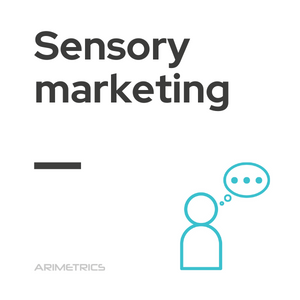Definition:
Sensory marketing refers to the study and implementation of strategies aimed at evoking emotions, memories and sensations in consumers through the stimulation of their senses. This discipline focuses especially on the sense of smell, given its significant role in human evolution and its ability to generate deep emotional responses.
Sensory Marketing Objectives
Sensory marketing strategies pursue several key objectives that seek to maximize the emotional connection between the consumer and the brand. The main objectives are detailed below:
- Strengthening the emotional bond between the consumer and the brand: Sensory marketing seeks to create a deep and lasting connection between the consumer and the brand, using sensory stimuli that evoke positive emotions and pleasant memories. This fosters customer loyalty and can influence their long-term purchasing behavior.
- Stimulating purchase through evocative memories: By triggering positive memories associated with past experiences, sensory marketing can incentivize the purchase decision. Brands can use scents, sounds or images that consumers associate with pleasurable moments, thus increasing the likelihood that the customer will choose their products or services.
- Creating memorable shopping experiences: Sensory marketing focuses on transforming the act of shopping into a pleasurable and unique experience. By designing retail environments that stimulate the senses, it aims not only to make the purchase more enjoyable, but also to leave a lasting impression in the customer’s mind. This can result in increased customer satisfaction and positive recommendations.
- Brand differentiation in a competitive marketplace: In a crowded retail environment, sensory marketing strategies can help brands stand out by offering unique and personalized experiences. Creative use of sensory stimuli enables companies to differentiate themselves from their competitors and attract consumers’ attention more effectively.
- Improved perception of product quality: Sensory stimulation can influence how consumers perceive the quality of a product or service. For example, a pleasant, well-designed environment can cause customers to associate the brand with higher quality and value, which can justify a higher price and encourage purchase.
Examples of the use of Sensory Marketing
Sensory marketing is used in a variety of industries to enhance the customer experience and build brand loyalty. Here are some specific examples:
- Perfume stores: They use specific scents to create a pleasant atmosphere that evokes positive emotions, which can influence customers’ purchasing decisions.
- Supermarkets: They can use soft music and aromas of freshly baked bread to create a cozy atmosphere that encourages customers to stay longer in the store and make more purchases.
- Restaurants: Employ ambient lighting and music to establish an ambiance that complements the dining experience, enhancing the overall perception of the quality of the food.
- Fashion brands: They use the visual presentation of their products in window displays, combining colors and textures to attract customers and create a unique shopping experience.
- Automobiles: Automotive brands use specific sounds in their vehicles, such as the sound of closing doors, to convey a sense of quality and robustness.
- Coffee shops: Many coffee shops use the aroma of freshly brewed coffee to draw customers in from the street, creating an emotional connection that can influence the decision to come in and buy.
Digital Marketing vs. Sensory Marketing
Digital marketing, on the other hand, is based on the use of digital platforms and technologies to interact with consumers. It includes strategies such as social media marketing, email marketing, online advertising and SEO optimized content. Its objectives include:
- Increase brand visibility in the digital environment.
- Generate leads and convert them into customers.
- Measure and analyze consumer behavior through data and metrics.
Intersection between Sensory Marketing and Digital Marketing
The combination of sensory marketing and digital marketing can result in more effective strategies. For example:
- Brands can use digital content that incorporates sensory elements, such as videos showing products in use or interactive experiences that engage multiple senses.
- Digital marketing campaigns can include promotions that invite consumers to experience the product in a physical environment, such as events or pop-up stores that use sensory marketing.
- The use of technologies such as augmented reality (AR) can enable consumers to interact with products in a way that stimulates their senses, thus enhancing the shopping experience.

